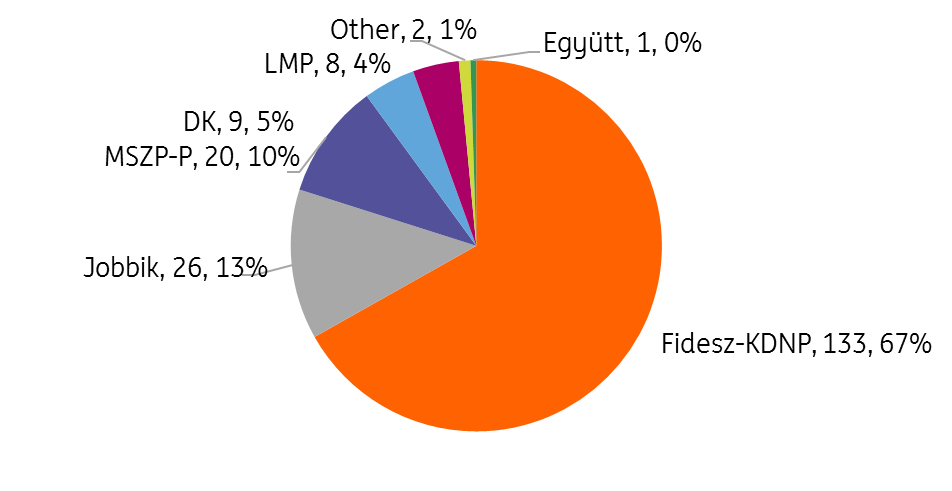Hungary: All smoke, no fire
Despite the high turnover, which should have been a glimpse of hope for the opposition, Fidesz-KDNP wins by a two-thirds majority, for the third time in a row
| 133 |
Seats won by Fidesz-KDNPOut of 199 seats |
At the 95% processing level, the turnout in the 2018 election came in at 69.41%, higher than expected and the second highest participation rate ever. Previously, political analysts warned of a surprisingly strong performance by the opposition if the turnout would be high. Political analysts were wrong, as Fidesz-KDNP won the battle when it came to mobilizing the voters.
Voter turnout in the Hungarian elections

According to preliminary data, Fidesz-KDNP received 48.5% of the party list votes, while Jobbik came in as second (19.8%) and MSZP-P (socialists) got only 12.3% of the votes. Fidesz strengthened its position countrywide compared to the 2014 elections, earning more seats via the party list. Both Jobbik and MSZP lost a lot of votes, thus reaching a lower percentage of total votes compared to the previous election. The National Assembly for the next for year will contain representatives from six parties with only one independent and one nationality representative. Momentum, the new party, which blocked Fidesz from applying the Olympic games, didn’t reach the 5% threshold.
As regards the constituency list, Hungary blossomed into orange (the colour of Fidesz). Out of 106 seats via the constituency list, Fidesz won 91, while the socialists earned 8 seats (all of the seats were won within Budapest).
Distribution of seats in the National Assembly

According to the preliminary data Fidesz won 133 out of 199 seats altogether, just enough to win by a two-thirds majority, for the third time in a row. However, it is important to note, that this result is still not official and it can be a subject to change. What is not a subject to change is the economic policy of Fidesz.
This publication has been prepared by ING solely for information purposes irrespective of a particular user's means, financial situation or investment objectives. The information does not constitute investment recommendation, and nor is it investment, legal or tax advice or an offer or solicitation to purchase or sell any financial instrument. Read more
Download
Download snap